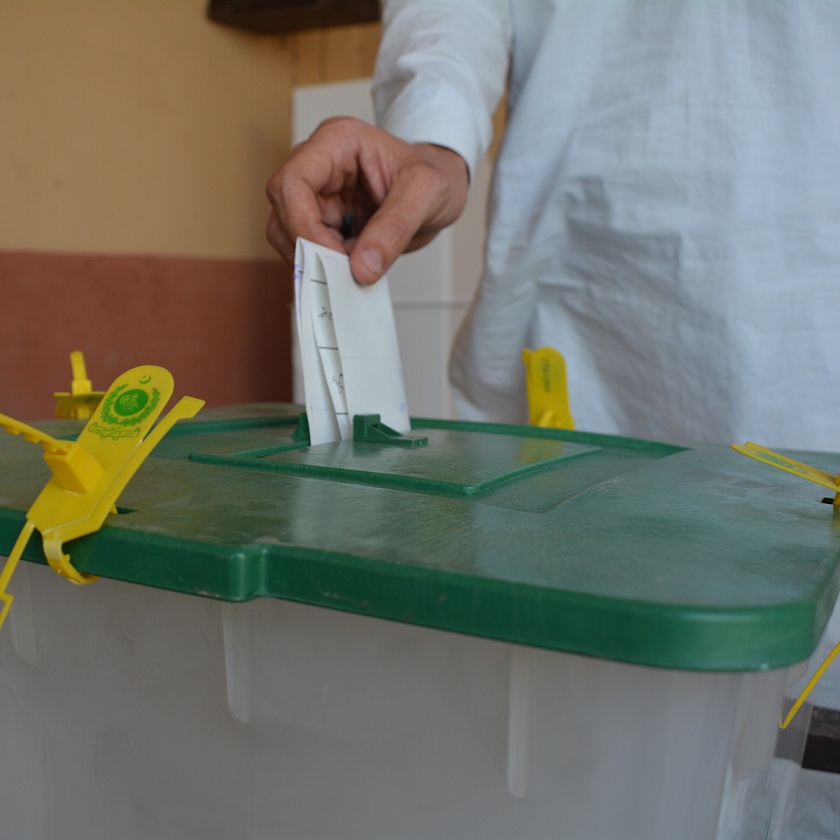With the new constituency delimitation, there has been an increase in some electoral constituencies, while in others, constituencies have decreased. According to the new proposals, an entire provincial assembly constituency in district Thatta is now absent.
The Election Commission of Pakistan issued the initial lists of constituencies for the upcoming general elections on September 17th.
In the new constituency delimitation, there are 266 seats in the National Assembly, while in the 2018 elections, there were 272 seats.
According to the new list, the federal capital, Islamabad, has three seats in the National Assembly, Punjab has 141 seats, Sindh has 61 seats, Khyber Pakhtunkhwa has 45 seats, and Balochistan has 16 seats.
In the 2018 elections, district Thatta had one National Assembly seat and three Provincial Assembly seats. The constituency NA-232 of the National Assembly was comprised of the entire district. After the 2023 delimitations, there have been no changes in it.
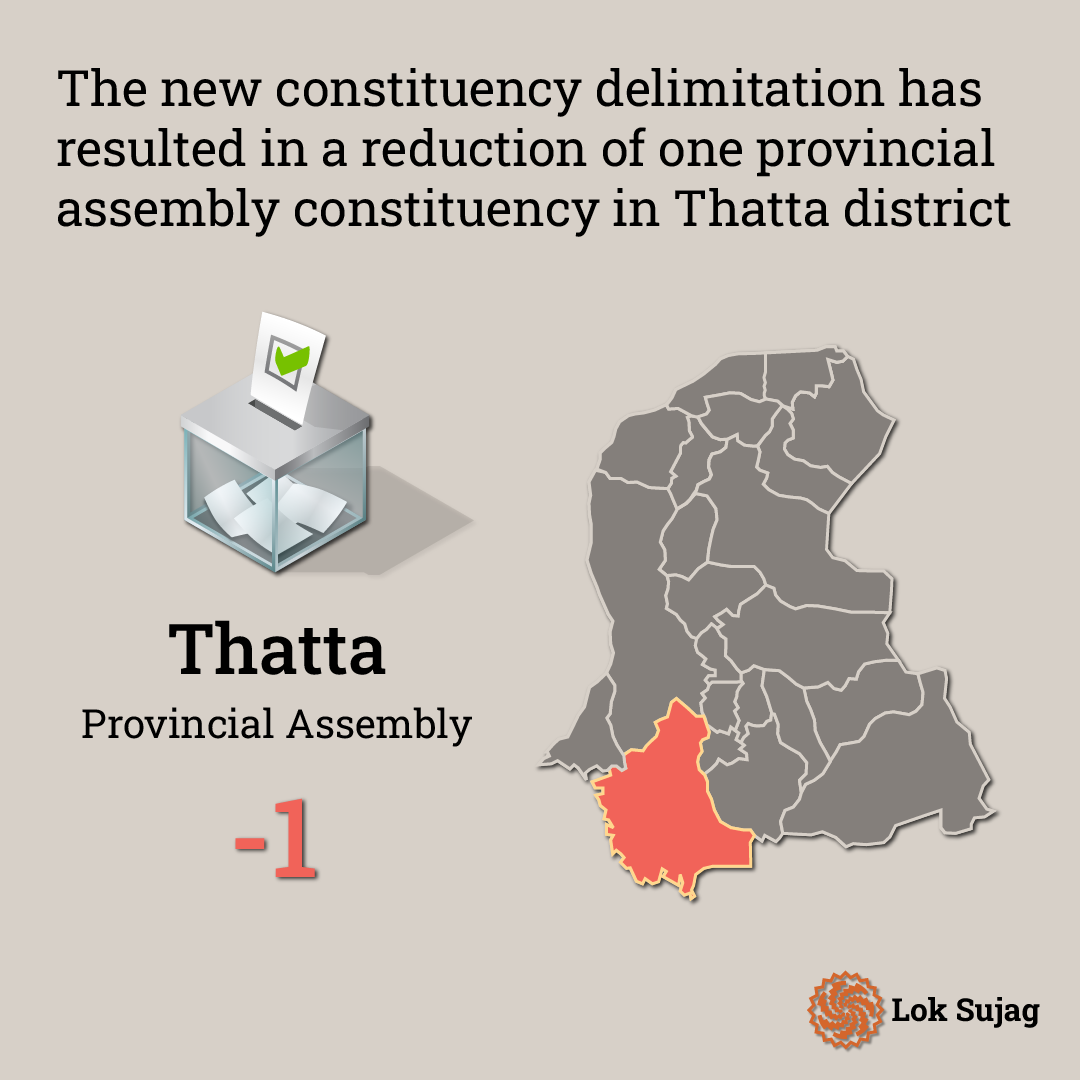
However, this constituency is now designated as NA-225. In the new constituency delimitation, the provincial constituency (PS-79) of the tehsil of Mirpur Sakro no longer exists. In the upcoming general elections, this district will elect one more member to the National Assembly and two members to the Provincial Assembly.
However, the local leadership of political parties has expressed their objections to these changes.
The eliminated or merged provincial constituency PS-79 was considered a stronghold of the Pakistan Peoples’ Party (PPP). In the previous elections, Jam Awais Jokhiyo of PPP secured this constituency with 43,874 votes and became a member of the Sindh Assembly. In 2013, Syed Amir Haider Shehrazi won as an independent candidate and later joined the PPP. Before him, Sassi Palijo also served as an MPA in this area.
This provincial constituency, PS-79, is spread across the coastal belt of Thatta, including Mirpur Sakro, Dhabiji, Gharo, Gajjo, and Bohara areas.
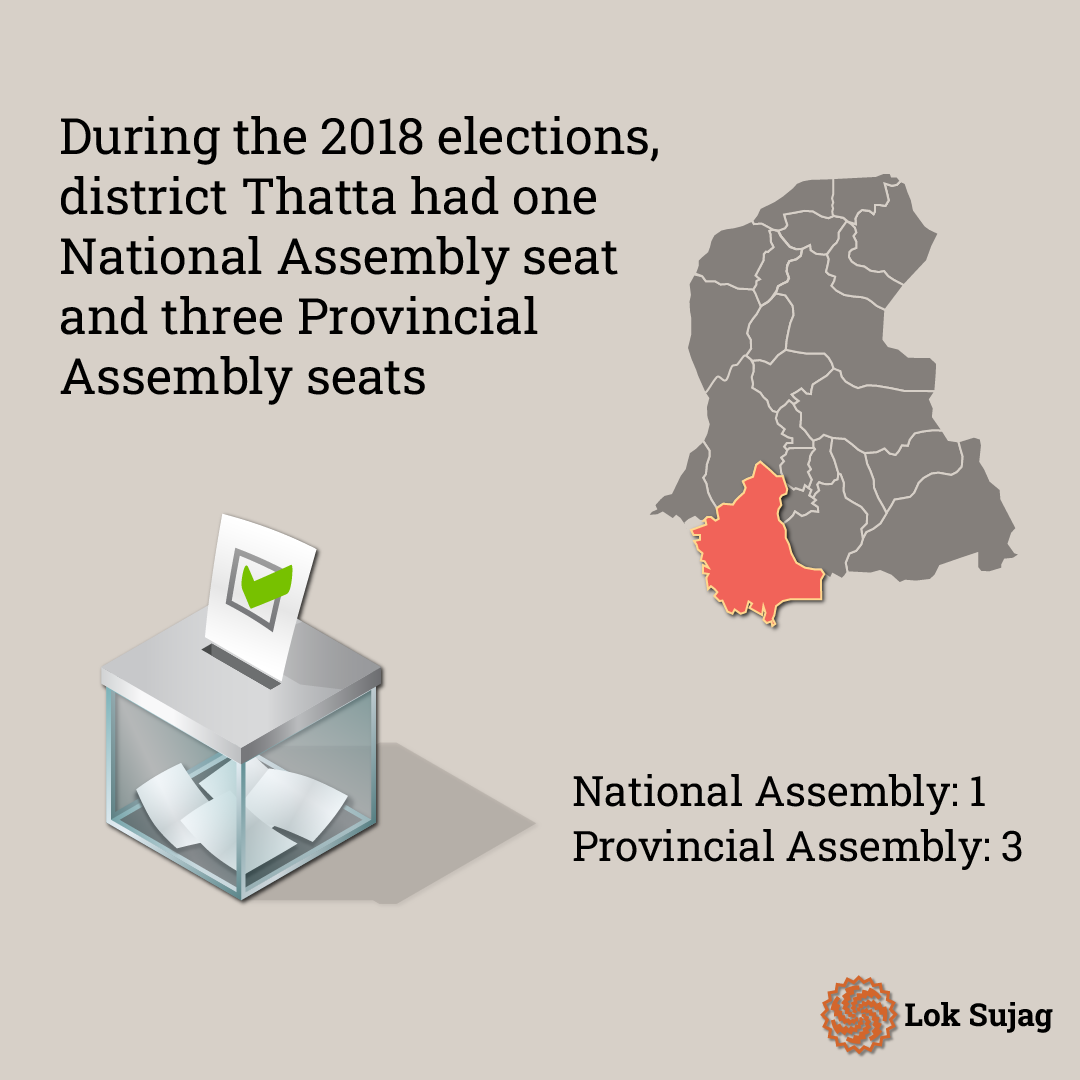
The total population of these areas was 341,412, while the total number of registered voters in this constituency was 146,196.
After the new census, the number of voters in provincial constituencies has been increased. According to the new formula, each provincial constituency in Sindh will have an approximate population of around 428,432.
Based on the same formula, the areas of this constituency (former PS-79) have been included in other provincial seats.
As a result, the population of both provincial constituencies in Thatta has now exceeded five lakhs each. According to the new delimitations, PS-75 (Thatta-I) will now be composed of a population of five lakhs, fifty-six thousand, and seven hundred sixty-seven. This constituency includes the Thatta tehsil, the areas of Mirpur Sakro, Town Committee Gharo, Gharo Taipdar, Circle of Mirpur Sakro and the Supervisory Tapidar Circle.
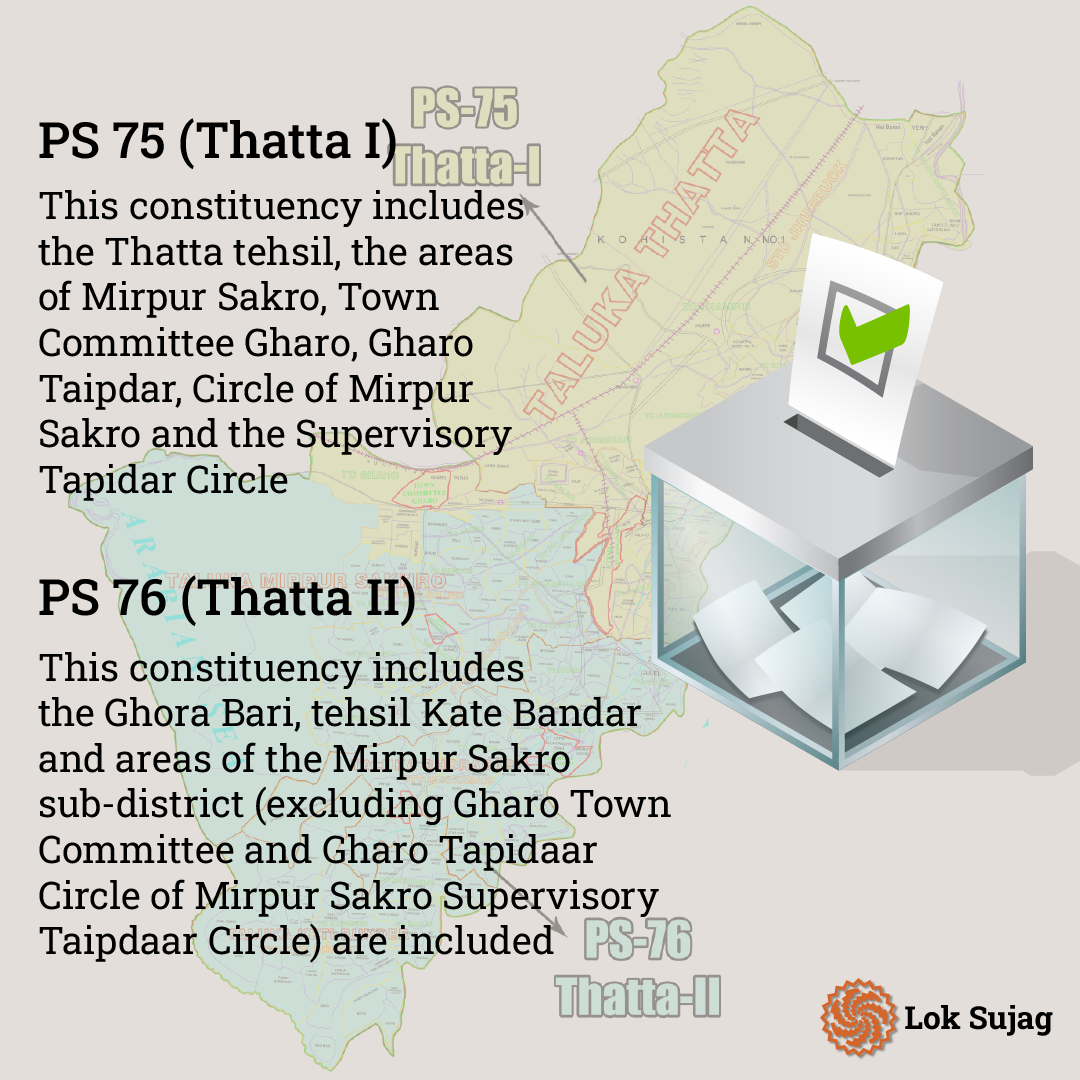
Similarly, PS-76 (Thatta-II) consists of a population of five lakhs, twenty-six thousand, and four hundred twenty-four individuals. This constituency includes the Ghora Bari, tehsil Kate Bandar and areas of the Mirpur Sakro sub-district (excluding Gharo Town Committee and Gharo Tapidaar Circle of Mirpur Sakro Supervisory Taipdaar Circle) are included.
The merged provincial constituency is predominantly inhabited by the Jokhio and Khas Kheli tribes, with Jam Awais Bajar Jokhio being the chieftain of the tribe. His name was also mentioned in Nazim Jokhio murder case and he was also in jail for some time.
Shabbir Bhatti, a senior journalist of Thatta, believes that the biggest loss from the new constituencies will be for the leader of the Khaskheli community, Iqbal Khaskheli

Iqbal KhasKheli has always been a strong candidate against the Pakistan People’s Party (PPP) and recently joined the PPP.
He says that the change in the constituency is also not making it any easier for Sassi Palijo. His father Ghulam Qadir Palijo, also won from the same constituency in the past.
“Sassi Palijo has also carried out developmental work in the same constituency.”
He says that the Shirazi brothers also have a good influence and reputation in Mirpur Sakro. However, they can adjust to other constituencies.
The party will benefit if these people continue to be with the Pakistan Peoples’ Party.
Also Read
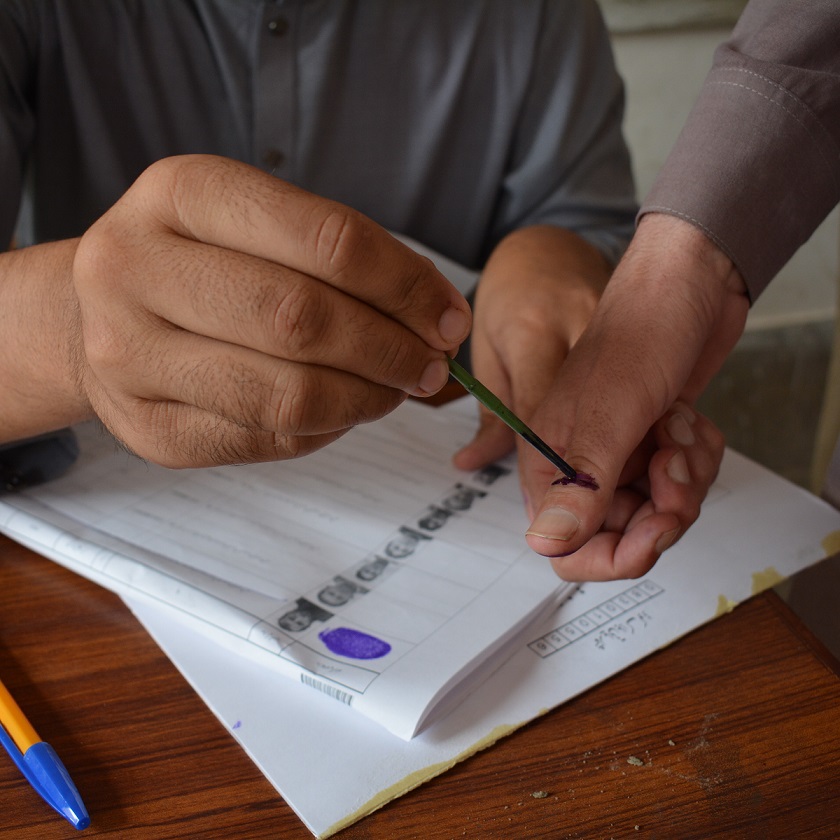
Balochistan's long-awaited Quetta municipal elections: A ray of hope amidst urban challenges
The local leadership of the Pakistan Peoples’ Party has strongly objected to losing one seat from their district.
The Pakistan Peoples’ Party president in Thatta district, Sadiq Memon, believes that the loss of this seat will be detrimental to the people of Mirpur Sakro. The representation of the local people will be eliminated, and he has sent this objection to the secretary of the Election Commission.
Former MPA Sassi Palijo and Ali Hasan Zardari, who have affiliations with the Pakistan Peoples’ Party, are also opposing the new delimitation.
Both leaders are echoing the same concern that the controversial delimitation has raised questions about the impartiality of the Election Commission. If this action is not reversed, it will likely be challenged.
Shabeer Bhatti, while clarifying the objections of the Pakistan People’s Party, explains that in Thatta, each of the three provincial assembly constituencies was designed with a population exceeding five lakhs, even though the population of the constituency to be eliminated was more than three lakhs and forty-one thousand. He suggests that population distribution could have been made to retain all three constituencies.
At the end of this constituency, the Election Commission has received objections. Different political parties have suggested the Election Commission draw constituencies according to population and voters’ proportions.
Published on 2 Nov 2023
